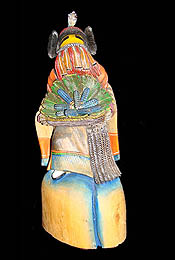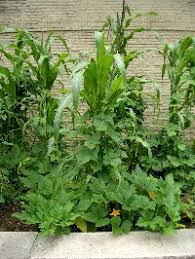
The Hopi tell the story of Blue Corn Maiden, the most beautiful of the corn maiden sisters. Blue Corn Maiden was a kind and gentle soul who brought peac and prosperity to the Pueblo People. One cold day, Blue Corn Maiden went outside to gather firewood, when she encountered Winter Katsina. Winter Katsina, the spirit who brings winter to the Earth instantly fell in love with her. He invited her back to this house and she went with him. He then blocked all of the windows and doors with ice and snow so that she was trapped.
Winter Katsina treated Blue Corn Maiden nicely, but she was lonely for the Pueblo People. One day, Winter Katsina left Blue Corn Maiden home alone while he went out to blow cold wind and snow and ice upon the valleys and mesas. Blue Corn Maiden brushed away some snow and was able to leave the house. She looked for the plants that she was used to seeing, but all she could find were four blades of yucca. She returned to the house and started a fire to stay warm.
The ice and snow around the house started to melt, and in came Summer Katsina with fresh corn and yucca blades. Suddenly, Winter Katsina came into the house with an icicle knife. He blew cold air at Summer Katsina show then responded by blowing warm air at Winter Katsina. Winter Katsina raised his icicle knife and Summer Katsina raised his yucca blades. The yucca blades caught fire, and the icicle knife melted.
The ice and snow around the house started to melt, and in came Summer Katsina with fresh corn and yucca blades. Suddenly, Winter Katsina came into the house with an icicle knife. He blew cold air at Summer Katsina show then responded by blowing warm air at Winter Katsina. Winter Katsina raised his icicle knife and Summer Katsina raised his yucca blades. The yucca blades caught fire, and the icicle knife melted.
Winter Katsina realized that he needed to make peace with Summer Katsina so they sat and talked. They agreed that Blue Corn Maiden would live among the Pueblo People and give them her blue corn for half of the year, in the time of Summer Katsina. The other half of the year, Blue Corn Maiden would live with Winter Katsina and the People would have no corn.








.JPG)





.JPG)
.JPG)
.JPG)


